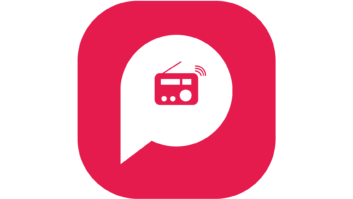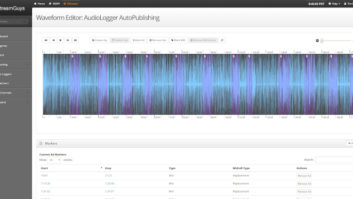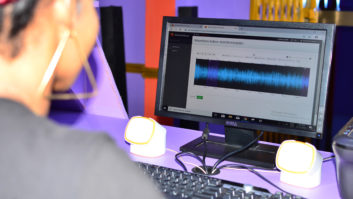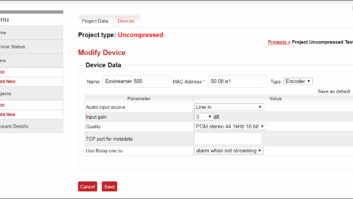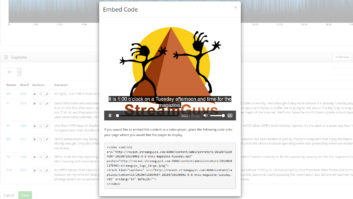Gaining the ability to generate revenue from streaming media is the Holy Grail for most radio stations. All stations want to be available to listeners that seek us out, whether by over-the-air radio, or by connections made over the internet.
The means by which we attempt to monetize our streams has changed over the years considerably, and now quite a few companies are in the business to facilitate revenue generation for radio companies and podcast publishers. We�re going to look at some of those offerings this time around.
SERVER SIDE
Not that long ago, it was common practice to insert spots in to the audio that was subsequently encoded as an audio stream at the station. While this is still done to a large degree, many companies now provide the same result by means of ad insertion downstream from the source encoder.
At the recent fall Radio Show, I had a chance to speak with StreamGuys� Mark Griffin about what �server side� means.
�When I say �server side,� literally running in addition to the streaming servers or podcast servers, are web servers themselves,� said Griffin. �There is an ad server that�s running completely separate from that server and it is communicating with it, communicates typically via metadata triggers or subaudible tones, ID3 tags for triggering when ads need to be served.
�Those ads can be scheduled or trafficked very specifically via features like geo-targeting by regions. It can be targeted very specifically by times of day. There are a lot of parameters for ads can be set up and those campaigns can be structured to fulfill the broadcaster�s needs,� he said.
Ad insertion and monetization services offered by StreamGuys can be used for either advertising or underwriting, depending on the broadcaster. I asked Griffin about the process of starting the service from the ground up. What would a station need to do?
�From a streaming side of things, there is just this traditional set up for encoder, automations, getting a signal flow together, getting us their stream,� he said. �Once we have a signal coming to us, the servers are provisioned and set up. We are able to provide the tools for the broadcaster, things like their custom players, which would be embedded on to the station�s website.�
A station can generate an embeddable player skin for any episode of a podcast using SGrecast.

Ads need to be uploaded to the StreamGuys servers, and the ad campaign parameters need to be configured.
StreamGuys also feature a service known as SGrecast which allows broadcasters to record live streams into archives of any length, making them available for rebroadcast, or as podcasts. StreamGuys� podcast hosting service delivers content to users as scheduled by their own choice of podcast application and SGrecast�s customizable Podcast Player automatically pulls new episodes as they are recorded. Using SGrecast, a station can also insert adds as pre-roll, mid- and post-roll ads, and content can be kept �evergreen� by the automatic replacement of old ads with new.
Adswizz Flexible ad insertionAdsWizz Pliable ad insertion


ADSWIZZ
AdsWizz is a major player in the streaming media advertising space. The AdsWizz AdServer enables publishers, which in our context means those producing streams or podcasts, to manage targeted and trackable audio advertising campaigns on any device and application, regardless of audio type (live, linear, podcast, on-demand) or distribution platforms (mobile application, connected devices, aggregation services).
AdServer offers multiple targeting parameters including demographic, location, device, user agent, format, genre and day-parting. AdServer can also match uploaded audio ad creative to the audio content�s encoding bitrate and volume levels, �streamlining creative workflow [and] eliminating the need for multiple audio creatives for different audio content formats.�
The AdsWizz Audio Ad Insertion Suite is�the software that enables stations to generate revenue from their content by managing the precise ad insertion into any digital audio content. It enables server-side ad insertion on major streaming servers (as well as client-side ad insertion on standard player technologies).
Flexible Audio Insertion Solution Supports dynamic, pre-, mid- and post-roll sequencing of audio advertisements within live, linear simulcasts, as well as, on-demand audio including podcasting. It also supports audio insertion in both, �PlayLater� (download and play later) and �PlayNow� (on-demand streaming) consumption scenarios.
Pliable Ad Insertion is used when there is no underlying content or �set� ad breaks, typical of on-demand music services, playlist feeds and podcasts. Ads will only be inserted if there is an ad available for the listener. Ad Replacement is used when there is an existing ad which needs a replacement within a �set� ad break.
Triton Digital Omny Studio

TRITON DIGITAL
Triton Digital offers many services to digital publishers, such as its own content delivery network. According to the company, its CDN is compatible with all popular format, codec and media players and will adapt to the needs of a station�s audience.
For ad insertion, Triton offers Tap OnDemand, which is designed to work with playlist-based or on-demand music services; and, Tap Live, which is designed for live stream of terrestrial station programming.
Omny Studio is Triton�s product for the monetization of podcasts. The Omny Studio platform enables audio publishers to replace static ads with dynamically inserted, targeted ads while automating key aspects of campaign management, such as industry separation, frequency capping and volume normalization. Features include radio broadcast capture; editing; podcast hosting; publishing and sharing; and analytics.
A station can earn revenue by running ads on the Securenet Cirrus player and mobile apps and by using the company�s Programmatic Advertising Delivery Network.

SECURENET
The Cirrus streaming service is offered by Securenet. A station can earn revenue by running ads on the Cirrus player and mobile apps by using the company�s Programmatic Advertising Delivery Network. The ads are geo-targeted. When a station turns its ad inventory over to the Cirrus Ad Delivery network, the player will display �IAB standard, family-friendly banner ads� to all of the station�s listeners.
The company also offers a free ad replacement and insertion service for streaming media. Stopsets are filled with audio ads when your station goes to commercial breaks. The station then splits the revenue with the ad service. Alternatively, a station can also run its own ad campaigns for local advertisers and sponsors, and fill the rest of the schedule automatically from the Cirrus network.
WIDEORBIT
WideOrbit also offers server-side ad insertion services for streaming media.
�We offer complete monetization solutions, soup to nuts from the bandwidth, to the ad insertion, to the stats and analytics, sound exchange reports, anything that you would need to stream a radio station,� said WideOrbit Sales Manager Dana Murphy.
WideOrbit offers everything a station needs to stream: bandwidth, ad insertion, stats and analytics and Sound Exchange reports.

I asked Murphy what it takes for a station could get started.
�Right now, you would need one PC per station that is dedicated just for streaming, it�s very basic. You could use refurbished type machines and not spend too much, because it just sits and handles the encoders and sends out the stream,� she said. �We provide all of the bandwidth, and we have servers that we use through other companies as well as some of our own. At the moment there are hardware requirements at the station. We are moving to a more cloud-based insertion where you shouldn�t need as much hardware as you do now.�
I also confirmed that the spots are played out in the WideOrbit side of the system.
�Right, because then we�re able to then account for how many impressions, when the spot ran so that you can effectively produce affidavits for your clients as well as get proper stats back,� she said. �We look at your metadata in order to place the spot. We can see your spot code coming up and so we get a call to our servers to then insert the spot at the right moment.�
I also asked Murphy about WideOrbit�s podcasting monetization. �We have a produSGrecastct called WideOrbit On Demand. It allows the publisher to dynamically insert ads at the time of download,� she said. �We provide a web-based console that allows you to set up a template for your podcast. It gives you the opportunity to have a prequel spot, and then a sponsorship title, your first segment, and then your ad break in the second segment. It�s also what allows you to insert spots at the time of download.�
The console also allows the user to ad spots without having to re-do the entire podcast. �If you have a podcast from the summer with a beach theme type of ad going on or an opening monologue, at Christmas time � for example � you can just change out that one sponsorship instead of recreating the whole file.�
Automation systems manufacturers often refer their customers to server-side ad insertion services. BSI, DJB, and Arrakis use Securenet; ENCO partners with StreamGuys.
SOURCE SIDE
Inserting spots locally into the audio feed that subsequently goes in the streaming encoder is a technique I�ll refer to as �source side.�
RCS has been accomplishing spot-insertion on the source side for many years. I spoke with Neil Perchuk of RCS about their automation system, Zetta.
RCS Zetta

Perchuk described their method of local ad insertion: �Zetta has the capability of doing splits, which is our way of creating alternative schedules for the automation system for multiple channels. Say, for example, you have your main terrestrial channel, an HD1, an HD2 and a webcast. We go from the main content to the spot block, and we can cascade off into multiple blocks � one each for HD1, HD2 and a web stream, with separate spots from the main terrestrial channel,� said Perchuk.
�Zetta will also perform a pitchless �stretch and squeeze� of all of those blocks, so that they all can then cascade back at the exact same time to the terrestrial channel, so that wherever you�re hearing those spot blocks on, you�ll seamlessly go back to the main content point.�
The audio stream generated by Zetta is subsequently fed in to an audio streaming encoder and then off to a CDN, such as Amazon Web Services or other server-side companies mentioned earlier.
I asked if a publisher could essentially use both source side and server side.
�Yes, you could mix and match. You could get insertion from another provider for some of your streams and still use Zetta for other parts of your streams.�
Needless to say, that could make log reconciliation complicated.
Futuri�s streaming transmitter includes Omnia audio processing, HTTP-live streaming (HLS) and �the same Flash-free Media Source Extensions technology in use by YouTube and Netflix.�

FUTURI MEDIA
Futuri Media facilitates streaming from the source side, even providing clients what they call the streaming transmitter.
Support for Futuri�s source-side streaming system includes ongoing support, real-time analytics and proactive monitoring of stream uptime and connectivity. The streaming transmitter includes Omnia audio processing, AdsWizz ad integration, HTTP-live streaming (HLS) and �the same Flash-free Media Source Extensions technology in use by YouTube and Netflix.�
Futuri�s POST is for stations that want to facilitate audience and revenue growth through on-demand audio. Using POST, the station can make use of its broadcast audio, edit it, and then add an image from Futuri�s fully-licensed library, after which it can be deployed across Facebook, Twitter and the station�s website. Speed to publish enables stations in PPM markets to receive credit for audio listened to within one day, and Planner function stations to automatically add sponsorships to on-demand audio.
OMT
WebSecure+ is a stand-alone web server for OMT�s iMediaLogger Digital Logger. One of the features of WebSecure+ is the ability to set up podcasting on your station�s website.� Station personnel select the external podcasting option in WebSecure+ for a selected iMediaLogger feed and then integrate the direct link to the website, thus allowing access for podcasts to listeners. WebSecure+ also provides support for iTunes and RSS so listeners won�t have a difficult time finding what they want to hear.
Spot insertion for both streaming and on-demand media provides an opportunity for a station to grow its overall revenue.
Using source-side, a station has greater control of CPM, but will need at least some amount of time from personnel to manage sales and trafficking. Using server-side ad insertion reduces the involvement of local personnel but means the station will have little control over what spots play out to on-line media users.
The bottom line? If you find yourself involved in the decision about which method to use, it pays to listen online to examples of each before committing either way.







